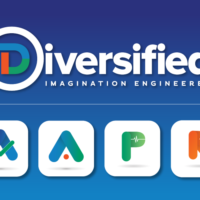BLOG
A Captivated Mind
Switched on teaching and learning with lecture capture & live streaming.
Lecture capture and live streaming are opening new worlds for educators. Distance and online learning were a reality abruptly thrust upon K-12 and higher education facilities in the past few months, with COVID-19 impacting more than 1.7 billion students worldwide. While not a new concept, distance learning for many was exactly that – a distant, long-term plan for mainstream education. But with the global pandemic, this future ‘want’ for a robust online learning infrastructure became a present need. Harvard Business Review (HBR) concluded that digital transformation in education is now ‘risk mitigation’ with current and future enrollments increasingly relying on an institution’s capabilities to provide dedicated distance learning opportunities. It is not simply a matter of taking an existing hardcopy syllabus to the digital realm. Distance learning has its own set of rules to play by.
We have all learned many lessons about the way we work, learn and communicate in remote and digital environments. What works face-to-face does not necessarily translate screen-to-screen. For educators tasked with inspiring and cultivating learning minds, trying to keep a somewhat ‘invisible’ audience engaged online (with cameras often switched off and microphones muted) is a unique challenge. How do you engage an ‘invisible’ audience? It’s time to be creative in how to turn passive learning into engaged, active learning online. It’s time to truly turn the switch on in online education–for educators and students alike.
There are already many platforms to transform physical, in-person tools such as whiteboards (or chalkboards), projectors and video equipment to work virtually. But screen sharing and digital/collaborative whiteboards are just the tip of the iceberg in a complete online teaching solution. There’s updating the tools you use to teach and then there’s reinventing how you teach! Capture learning and live streaming are two ways educators can begin to amplify both teaching and learning.
Capture learning includes any technology that allows instructors to record their lectures and make them available online, while live streaming is the broadcast of live lectures to a large audience over the internet. Unfortunately, with inadequate technology, it can easily become a constrained way of teaching. Whereas before professors and teachers were able to pace freely across a room–moving from lectern to whiteboard and physically directing students’ gaze towards key points in presentations–teaching solely via laptop can feel limited, simply teaching seated from your office desk, sometimes with poor audio and video quality. But that does not have to be the case. Legrand’s AV division prides itself on products and solutions that achieve ‘human-to-human connections through technology’ and as such the company has excellent tips for effective virtual training. From not relying solely on laptop microphones and webcams, to promoting physical movement with PTZ cameras, camera tracking, and camera presets, Legrand has a flexible range of products and solutions that really open up the space and the possibilities to teach and learn in virtual classrooms.
But more than the technology in and of itself, it is about how you use lecture capture and live streaming to teach. It is reshaping content to suit these new platforms. It’s creating an online performance of your lesson (and not just reading out loud from notes), gamifying your classes and making the most of a virtual space that can be much more than unidirectional. It’s considering the difference in attention spans and audience engagement when in person and online; providing varied and high-quality ways of visualizing and illustrating your points (no low-quality, difficult to read scanned materials) and driving students to really switch on–not only their minds but their microphones and cameras and truly engage in the teaching curriculum.








